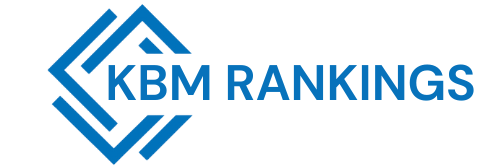In today’s fast-paced market, brand identity isn’t just about logos or taglines—it’s about how consistently you deliver experiences across every customer touchpoint. Yet, most organizations find themselves trapped between two extremes: maintaining brand consistency or driving innovation and speed.
This is where Agile frameworks come in. Originally built for software development, frameworks like Scrum, Kanban, and Scaled Agile Framework (SAFe®) now empower marketing and brand teams to balance structure with flexibility. By adopting Agile, teams can align creativity, technology, and operations under one shared rhythm—building a brand that’s both stable and adaptive.
Read also: Mıllıeyt: Discovering the Popular Turkish Newspaper Brand
The Brand Consistency Dilemma
When Growth Creates Brand Chaos
As brands expand, new products, campaigns, and regions often lead to fragmented messaging. Content teams, designers, and marketing managers start operating in silos. The result? Inconsistent visuals, tone, and customer experience.
For example, when different departments interpret guidelines differently, the customer no longer recognizes the brand as one cohesive entity. Agile frameworks solve this by introducing shared backlogs, defined workflows, and cross-functional alignment—ensuring that every output reflects the same strategic intent.
The Balance Between Speed and Structure
Traditional marketing operates like a waterfall—slow, linear, and rigid. A single campaign can take months to launch, and by the time it hits the market, audience preferences may have already shifted. Agile methodology, however, encourages iterative work through short, focused cycles called sprints.
This means teams can test creative assets, messaging, or design elements, gather feedback, and make real-time adjustments—all without breaking brand rules.
Why Traditional Branding Models Fall Short
Siloed Teams and Slow Execution
In traditional setups, brand managers, design teams, and marketing leads often work separately. Each department guards its domain, creating delays and confusion. Approvals take weeks, revisions pile up, and no one owns the final outcome.
Agile frameworks fix this by emphasizing collaboration over hierarchy. Instead of passing work down a chain, teams work together in cross-functional pods—each responsible for strategy, execution, and feedback.
The Cost of Inflexibility
Rigid brand systems often resist change. While consistency is crucial, too much control suffocates creativity. Agile introduces the concept of “guardrails, not gates”—guidelines that keep teams on-brand while allowing experimentation.
This flexibility helps brands stay relevant without diluting their identity. Whether it’s adapting to market trends, consumer data, or platform algorithms, Agile enables teams to pivot with purpose.
How Agile Frameworks Elevate Brand Strategy
Building Adaptive Governance
Agile frameworks like SAFe® and LeSS (Large-Scale Scrum) bring structured adaptability. They allow large enterprises to scale branding decisions while maintaining flexibility across teams.
With tools like product backlogs, daily standups, and retrospectives, teams stay aligned on priorities and learn from each iteration. Instead of top-down control, Agile governance promotes transparency and accountability.
Embedding Feedback Loops
The heart of Agile lies in continuous feedback. Whether it’s from stakeholders or consumers, every cycle collects insights that refine future actions. For branding, this means monitoring customer sentiment, campaign performance, and visual consistency in real time.
Tools like Jira, Asana, or Monday.com help manage this process, ensuring data-driven decision-making replaces guesswork.
Integrating Design and Content with Sprint Planning
Agile turns creative production into a measurable, repeatable process. Designers, writers, and strategists collaborate within the same sprint. By setting clear deliverables—like “update product visuals” or “refresh tagline messaging”—teams stay on-brand while delivering faster.
Each sprint review doubles as a brand checkpoint, ensuring quality and alignment remain uncompromised.
Practical Ways Agile Enhances Brand Consistency
1. Shared Brand Backlog
A brand backlog centralizes tasks related to identity, assets, and campaigns. It helps prioritize work based on impact rather than urgency. When every team draws from the same backlog, duplication disappears, and consistency grows.
2. Sprint Reviews as Brand Audits
Agile sprint reviews provide opportunities to assess whether deliverables align with brand standards. These regular reviews ensure that visuals, tone, and message reinforce the same brand story.
3. Retrospectives for Continuous Brand Improvement
Every sprint ends with reflection. Teams discuss what worked, what didn’t, and what can be improved. This culture of learning ensures the brand evolves alongside audience expectations—without losing its voice.
Real-World Impact of Agile in Branding
From Campaign Speed to Creative Harmony
When brands apply Agile to their marketing operations (MarOps), campaigns move from concept to launch in weeks instead of months. Creative directors, copywriters, and project managers collaborate in real-time, reducing delays and improving accuracy.
This efficiency doesn’t just save time—it builds trust among teams and stakeholders. Everyone knows what’s happening, when it’s happening, and why it matters.
Data-Driven Brand Decisions
Agile’s emphasis on metrics turns branding from art to strategy. By tracking engagement rates, conversion data, and brand recall, teams can measure whether a message truly resonates.
If the data shows a gap, they adjust—fast. This cycle of test, learn, and improve keeps brands relevant in dynamic markets.
Challenges of Scaling Agile for Branding
Maintaining Cultural Alignment
Agile isn’t just a process—it’s a mindset. Teams must embrace collaboration and shared ownership. Without buy-in, Agile frameworks become mechanical checklists rather than transformation tools.
Avoiding Over-Iteration
While flexibility is key, too much iteration can confuse customers. The goal isn’t constant change—it’s purposeful evolution. Leaders must balance agility with clarity, ensuring every pivot serves the brand’s long-term vision.
Integrating Technology and Creativity
Many organizations struggle to blend automation tools with creative workflows. Agile helps bridge that gap by defining clear stages for ideation, production, and deployment—supported by real-time analytics and automation platforms.
Measuring Brand Success Through Agile Metrics
Cycle Time and Velocity
Agile metrics like cycle time (how fast work moves from idea to delivery) reveal how efficiently teams operate. A shorter cycle means quicker brand responses and faster market impact.
Customer Feedback Loops
Brands that actively gather customer feedback during campaigns tend to outperform those relying on quarterly reports. Agile embeds these loops naturally, ensuring constant visibility into what customers love—or don’t.
Consistency Index Tracking
Modern analytics platforms allow tracking of visual and verbal consistency across campaigns. By measuring deviations and aligning performance, brands can maintain coherence even across global markets.
Conclusion: Bridging the Gap Between Identity and Agility
Agile frameworks are more than just project management tools—they’re brand evolution engines. By uniting speed, consistency, and innovation, Agile turns scattered teams into synchronized ecosystems.
In an era where consumer attention shifts daily, the brands that thrive are those that can adapt fast without losing focus. Agile makes that possible. It ensures your brand doesn’t just move quickly—but moves smartly, with clarity and purpose.
The missing link between creativity and consistency isn’t another campaign—it’s Agile thinking.




